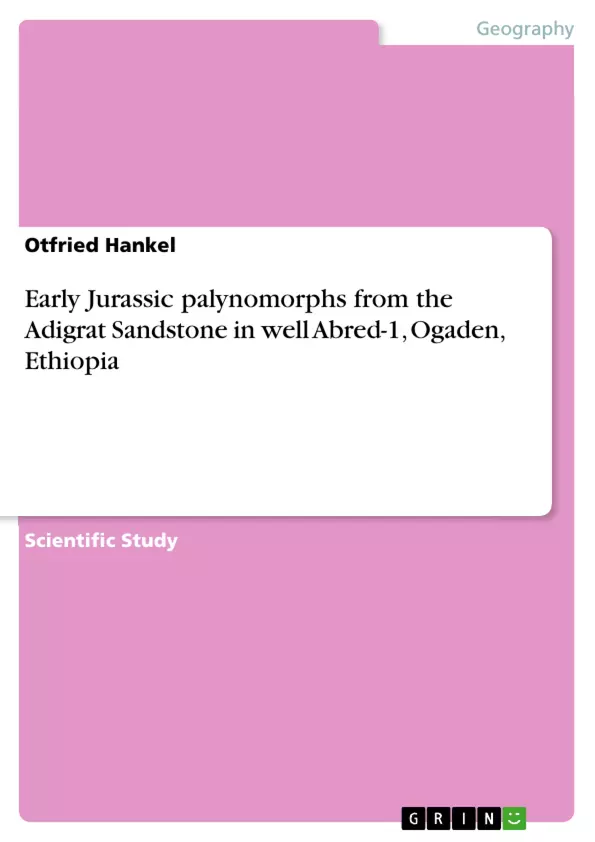Palynomorphs have been recovered from the Adigrat Sandstone in the subsurface of the southeastern Ogaden region of Ethiopia. Core samples from well Abred-1 have yielded rich and well-preserved assemblages which are characterized by the dominance of the pollen genus Classopollis (average frequency 93%). Significant accessory elements are Anapiculatisporites dawsonensis, Ceratosporites helidonensis, Foraminisporis tribulosus, Nevesisporites vallatus, Retitriletes semimuris, Araucariacites australis, Callialasporites turbatus, and Perinopollenites elatoides. The microflora can be correlated with the lower part of the Corollina torosa Zone of Australia. It is concluded, therefore, that the studied section is of Hettangian or Sinemurian age. Continental deposition of the Adigrat Sandstone occurred probably under hot and dry climatic conditions. The presence of small numbers of acritarchs indicates a restricted marine influence.
Inhaltsverzeichnis (Table of Contents)
- Abstract
- Introduction
- Source of material
- Techniques and storage of material
- List of taxa identified
- SPORES
- TRILETE SPORES
- AZONATE FORMS
- CINGULATE FORMS
- CAVATE FORMS
- ALETE SPORES
- TRILETE SPORES
- SPORES
Zielsetzung und Themenschwerpunkte (Objectives and Key Themes)
This paper examines the palynomorphs discovered in the Adigrat Sandstone of the southeastern Ogaden region in Ethiopia, specifically from the core samples of well Abred-1. The research aims to determine the age of the studied section and reconstruct the depositional environment of the Adigrat Sandstone.
- Palynomorph assemblage and its composition
- Age determination of the Adigrat Sandstone
- Paleoenvironmental reconstruction based on palynomorph data
- Correlation with palynomorph zones in Australia
- Continental depositional environment
Zusammenfassung der Kapitel (Chapter Summaries)
The abstract provides a concise overview of the findings, emphasizing the dominance of the pollen genus Classopollis and highlighting the significance of accessory palynomorphs in establishing the Hettangian or Sinemurian age of the studied section. The introduction discusses the geological context of the Adigrat Sandstone, placing it within the Karoo sequence and describing its relationship to other units. The "Source of material" section details the well Abred-1, its location, depth, and the specific samples used for palynological analysis. The "Techniques and storage of material" section outlines the standard palynological technique employed and the storage location of the samples and processed materials.
Schlüsselwörter (Keywords)
The primary keywords associated with this study are: palynomorphs, Adigrat Sandstone, Ogaden, Ethiopia, Early Jurassic, Hettangian, Sinemurian, paleoenvironment, Classopollis, Corollina torosa Zone, continental deposition, acritarchs, marine influence.
- Quote paper
- Dr. Otfried Hankel (Author), 2013, Early Jurassic palynomorphs from the Adigrat Sandstone in well Abred-1, Ogaden, Ethiopia, Munich, GRIN Verlag, https://www.grin.com/document/208243



